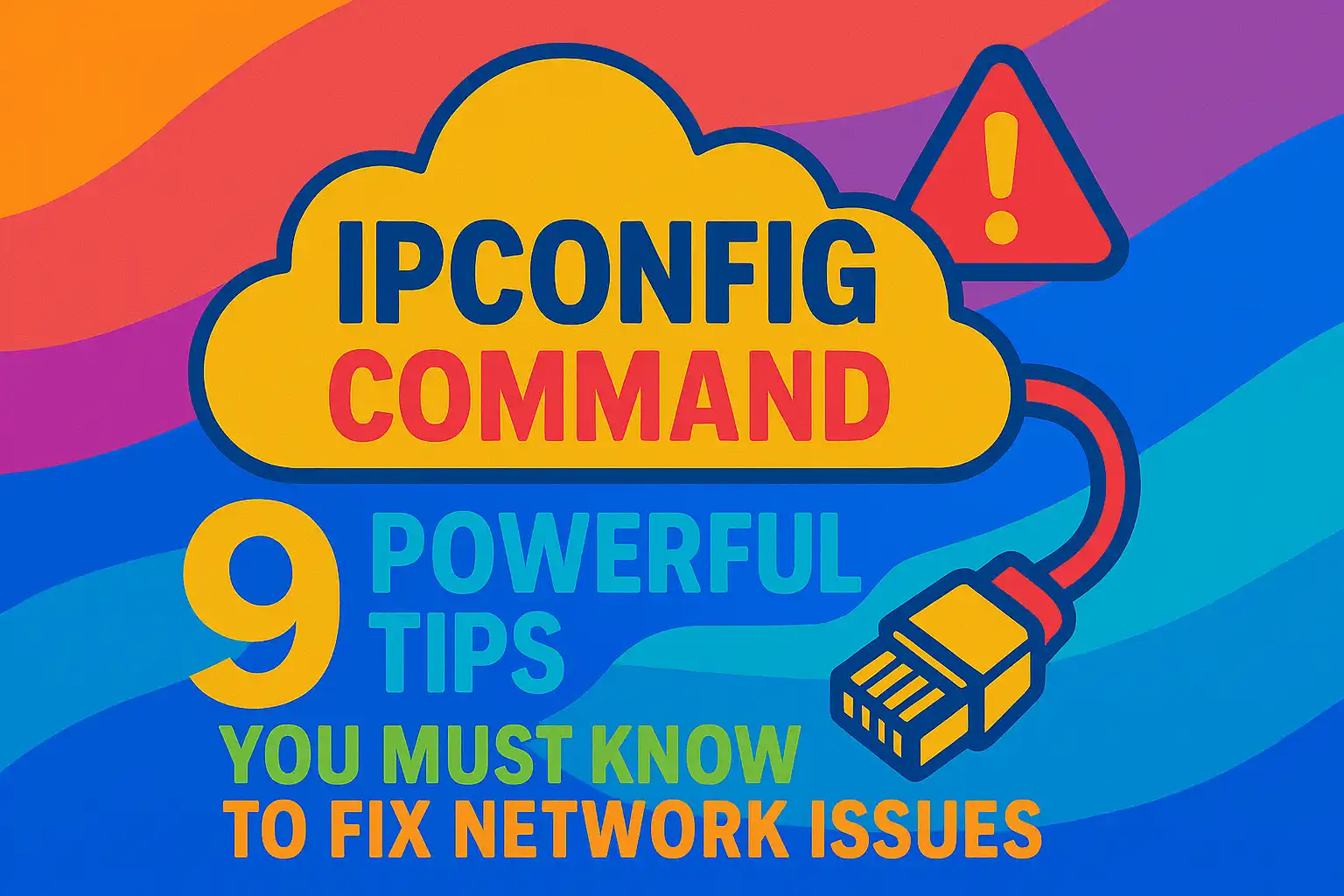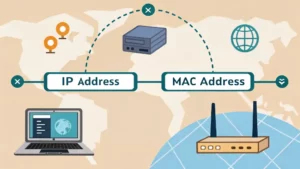Table of Contents
Need to troubleshoot your Windows network problems quickly? The ipconfig command is a powerful tool built into the Windows OS that offers real-time network diagnostics. From IP renewals to DNS cache clearing, these commands can solve most connection problems in seconds.
What Does the ipconfig Command Do?
The ipconfig command displays the current TCP/IP configuration of a Windows computer. It reveals IP addresses, subnet masks, default gateways, and DNS servers. Advanced users and IT professionals use ipconfig mainly to identify, reset, or troubleshoot network connectivity issues.
1. How to Use the Basic ipconfig Command
To get started, open the Command Prompt and type:
ipconfig
This shows your device’s basic IP address, subnet mask, and default gateway. If you’re connected to a network but not getting internet access, the ipconfig windows output can reveal misconfiguration issues.
2. What is the Difference Between ipconfig and ipconfig /all?
ipconfig vs ipconfig /all: The basic ipconfig prints limited info, but the ipconfig /all command displays detailed configuration, including:
- Physical (MAC) address
- DHCP lease data
- DNS server list
- WINS, suffix search list
Use ipconfig /all command windows 10 systems for comprehensive troubleshooting, especially in IT support environments.
3. Release & Renew IP Using ipconfig /release and /renew
Stuck with a bad IP address or network? Use these commands:
ipconfig /release ipconfig /renew
ipconfig renew command refreshes your IP lease from the DHCP server. It’s a go-to fix when a user’s device can’t access the network after waking from sleep or moving across Wi-Fi networks.
4. Fix DNS Issues Using ipconfig /flushdns
If web pages don’t load or point to the wrong server, you’re likely facing DNS cache corruption. Use:
ipconfig /flushdns
ipconfig /flushdns command clears old or bad DNS records, which can instantly fix many internet connectivity issues.
5. View DNS Resolver Cache with ipconfig /displaydns
Want to see DNS entries currently cached on your device? Run:
ipconfig /displaydns
This shows domain names your computer has resolved recently. IT admins use ipconfig/displaydns to verify whether DNS resolution is working properly or if phishing/malware domains are sticking.
6. Search the Local DNS Cache
Combine it with the find command to look up a specific domain within the cache:
ipconfig /displaydns | find "example.com"
This is known as ipconfig /displaydns search and is useful for network forensics and confirming domain resolution.
7. Using ipconfig on Multiple Network Interfaces
If you have both Wi-Fi and Ethernet connected, windows ipconfig shows both interfaces. Check the interface name and configuration to avoid routing problems or duplicate IP issues.
8. Scripted Diagnostics with ipconfig Switches
Automate ipconfig diagnostics with batch scripts using switches like:
- /all
- /renew
- /flushdns
- /release
- /displaydns
These ipconfig switches are invaluable for sysadmins managing multiple endpoints.
9. When to Use ipconfig Instead of GUI Tools
While Control Panel and Settings in Windows 10/11 offer similar info, command prompt ipconfig gives faster, detailed results. Plus, if you’re remotely connected or using scripts, it’s the only viable option.
Best Practices When Using ipconfig Commands
- Always use Administrator Command Prompt for full functionality.
- After /flushdns, verify DNS resolution with /displaydns.
- Use /renew after switching Wi-Fi networks to prevent DHCP issues.
Real-World Scenario: Diagnosing a Network Outage
An office setup suffered random network drops. Running ipconfig /all revealed conflicting IPs from a misconfigured router. A quick ipconfig /release and /renew reset the lease, fixing the issue instantly. Combined with ipconfig /flushdns, all users were reconnected in minutes.
Conclusion: Why Mastering the ipconfig Command is Essential
The ipconfig command suite is a powerful diagnostic tool that should be in every Windows user’s or IT professional’s arsenal. Whether you’re facing DNS issues, IP conflicts, or basic connection problems, knowing these commands will save time and frustration.
FAQ
What is the purpose of ipconfig?
Ipconfig provides vital TCP/IP network configuration info. It helps in diagnosing connectivity issues, revealing IP addresses, gateway paths, and DNS servers.
How do I reset my IP address using ipconfig?
Run ipconfig /release followed by ipconfig /renew in Command Prompt to release and obtain a new IP address from the DHCP server.
What does ipconfig /flushdns do?
It clears the DNS resolver cache, which can fix problems caused by outdated or corrupt DNS records.
Is ipconfig /all safe to use?
Yes, it’s a read-only command that does not alter any settings. It simply shows detailed network info.
Can I use ipconfig on Windows 11?
Absolutely. All ipconfig commands fully support Windows 11 in addition to Windows 10 and earlier versions.
Related Internal Links
- Windows Network Troubleshooting Guide
- How to Flush DNS Cache in Windows
- Top Command Prompt Commands for Network Fixes
External Resources:




